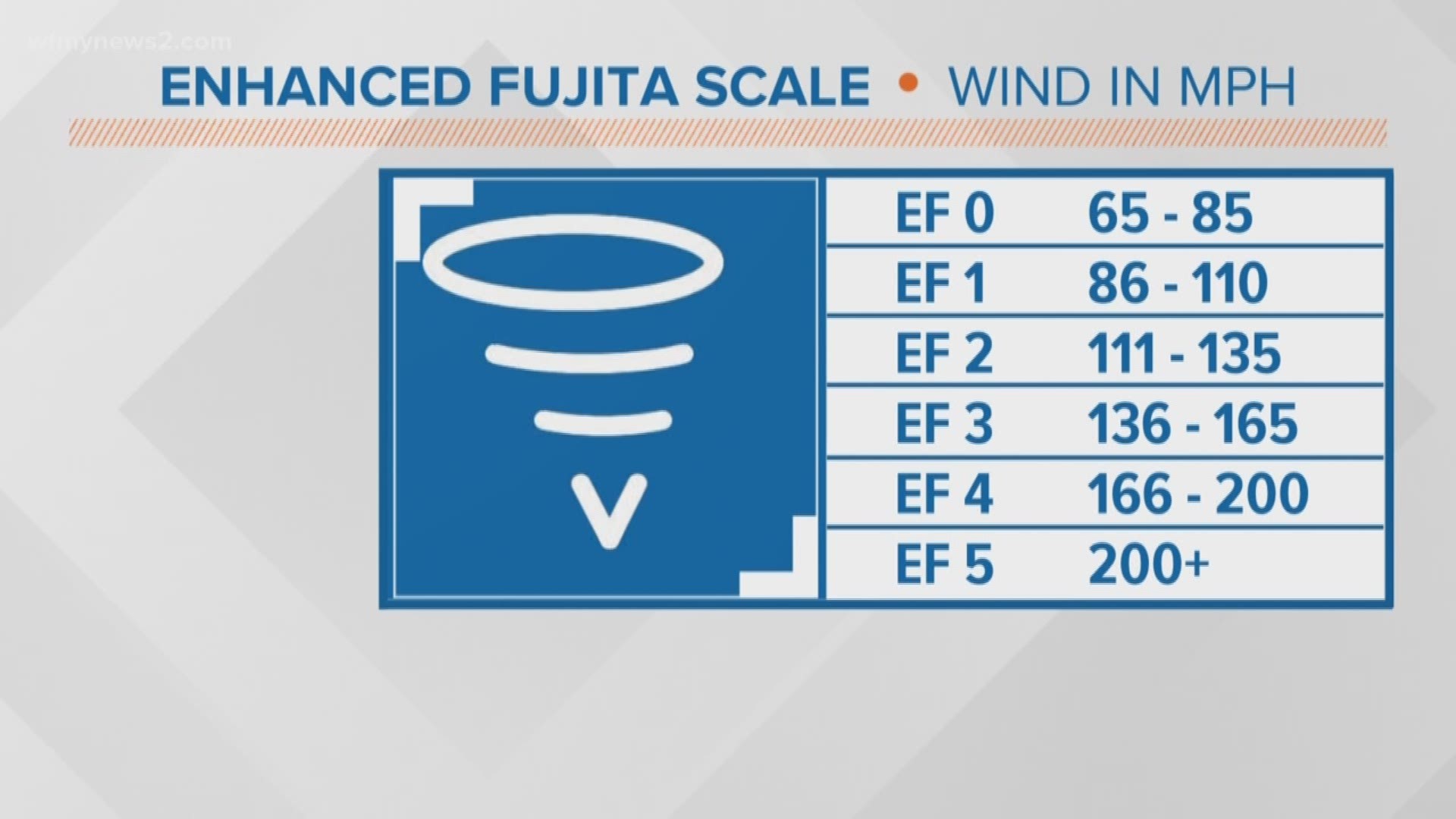Make sure you know what to do in the event of severe weather. That means having a plan, making sure you get weather alerts and keeping it on WFMY News 2 for the latest information.
Knowing these definitions and safety tips will keep you and your family safe:
What is a Tornado Watch?
A Watch means that conditions are favorable for severe weather or a tornado to develop. People located in and around the watch area should keep an eye toward the sky and listen to their NOAA weather radio or tune to WFMY News 2 for further weather information. The watch is intended to give you time to prepare and review your safety rules.
What is a Tornado Warning?
A Tornado Warning means that a tornado has been detected by the National Weather Service Doppler radar or a reliable report of a tornado has been reported from the field. A tornado warning is usually issued for portions of one or two counties for an hour or less. The storm could also produce large hail and destructive straight line winds. If the tornado warning includes your neighborhood or workplace, you should seek safe shelter immediately.
Here are some tornado safety rules:
In general, get as low as you can. A basement below ground level or the lowest floor of a building offers the greatest safety. Put as many walls between yourself and the outside as possible. Avoid windows at all costs!
Tornadoes could be obscured by rainfall or come in the overnight hours. Do not wait until you see or hear the tornado, it may be too late.
Do not waste time opening or closing windows and doors. It will not protect the structure. You will only waste time and put yourself and others at greater risk. Use those valuable seconds to find a place of safety.
► Get the new WFMY News 2 App!
HOME SAFETY
In homes or public buildings go to the basement or a small interior room such as a closet, bathroom or an interior hall on the lowest level. Close all doors to the hallway for greater protection. If possible, get under something sturdy like a heavy table. Protect yourself from flying debris with pillows, heavy coats, blankets, or quilts. Use bicycle or motorcycle helmets to protect your head.
MOBILE HOME
If you are inside a mobile home, leave well in advance of the approaching severe weather and go to a strong building. If there is no shelter nearby, get into the nearest ditch, low spot or underground culvert. Lay flat, covering your head with your hands for protection.
VEHICLE
If you are in a vehicle or outdoors when tornadoes are possible, limit your outdoor plans or finish them early.
OUTSIDE
Stay close to a sturdy shelter. If caught outside, find shelter in a ditch or remain in your vehicle and cover your head for protection. Do not take shelter under a highway overpass, where wind speeds can increase due to a tunneling effect. It is best not to put yourself or others in a situation where no sturdy shelter is available.
Remember, stay away from doors, windows, outside walls and protect your head!
It's best to have a plan before the storm.
What actions will you take when a watch is issued? What about a warning?
Remember damaging straight-line winds can cause as much damage as a weak tornado.
Do you know where your weather shelter/safe room is located?
Here are some additional tips:
- Before a Storm: Charge your cell phone before severe weather hits. Landline phones, especially cordless models, are often affected by power outages.
- During a Storm: Don't take a chance by going out into bad weather. Check your mobile phone, radio or television for updates and stay inside until the threat has passed.
- After a Storm: Never pull tree limbs, telephone or cable lines off of power lines yourself or attempt to move a downed power line. Contact your local authorities or dial 911.
If it's safe to do so, snap any weather-related photo or take a video and share it with us by sending an email to webteam@wfmy.com or myphotos@wfmy.com You can also Tweet to @WFMY use #StormTrack2 hashtag. Remember, SAFETY FIRST!
The new WFMY News 2 phone and tablet app boasts a modernized look and feel—download now.

